

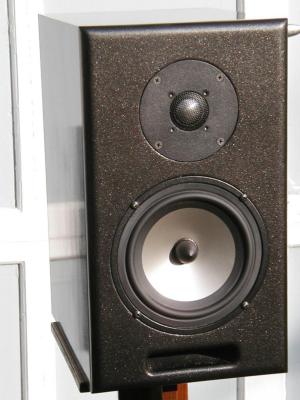
IntroductionThe DD8.1 is a modified version of DIY loudspeaker design Tony Gee's DD8 monitor bookshelf speaker. There are two versions of the original DD8. The original DD8 employed the Seas H1006 or H1008 depending on the desired low end characteristics. I took the design a step further and adapted it to accept the Seas L17RCY/P (H763) aluminum woofer by increasing the cabinet size, lowering the port tuning frequency and modifying the crossover slightly. DriversSeas 27TAFC/G (H883) 27mm High Definition aluminium/magnesium alloy dome tweeter with a wide, soft fabric surround made from SONOTEX. The dome and surround materials give high consistency and excellent stability against variations in air humidity and temperature. The diaphragm is protected by a highly perforated hexagrid carrying an acoustic lens which tailors the high frequency roll off characteristic. The voice coil is wound on an aluminium voice coil former with adequate ventilating holes to eliminate noise from internal air flow. The voice coil is immersed in low viscosity magnetic fluid, for high power handling capacity and simplified crossover design. A stiff and stable rear chamber with optimal acoustic damping allows 27TAFC/G to be used with moderately low crossover frequencies. The chassis is precision moulded from glass fibre reinforced plastic, and its front design offers optimum radiation conditions.Seas L17RCY/P (H763) is a 6.5" High Fidelity woofer with an injection moulded metal chassis, intended for bass reflex and transmission line designs. The stiff, yet light aluminium cone and the low loss rubber surround show no sign of the familiar 500-1500 Hz cone edge resonance and distortion assosiated with soft cones. On the other hand, the cone break up modes at higher frequencies call for special attention in the crossover design work. A high temperature voice coil wound on an aluminium voice coil former gives a high power handling capacity. The phase plug reduces compression due to temperature variations in the voice coil, eliminates resonances that would occur in the volume between the dust cap and the pole piece and increases the power handling capacity. The large magnet system provides high efficiency and low Q. Cabinet DesignThe DD8.1 cabinet has an internal volume around 16 liters and a port tuning frequency in the upper 30's. A slot port is located on the front of the cabinet. A moderate amount of internal bracing is employed in order to reduce any cabinet wall resonances that might "color" the sound of the speaker. I lined the cabinet with a layer of foam to absorb any standing wave resonances. I used plain foam but convoluted foam would probably be a better choice for this application. I finally added a small amount of Acoustastuff behind the woofer. The crossover is mounted to the back of the cabinet with a pair of dry wall screws and is removable through the woofer hole.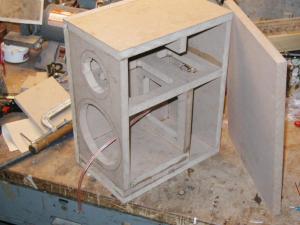
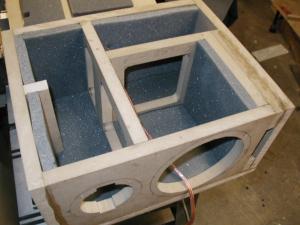 Some shots of the internal bracing Crossover designThe DD8.1 uses a 2nd order series crossover network to divide and filter the signal between the woofer and tweeter. There is an additional notch filter placed in parallel with the woofer in order to attenuate the sharp and large resonance of the aluminum cone that shows up around 5kHz. The parallel LCR circuit provides impedance equalization resulting in a very flat impedance response.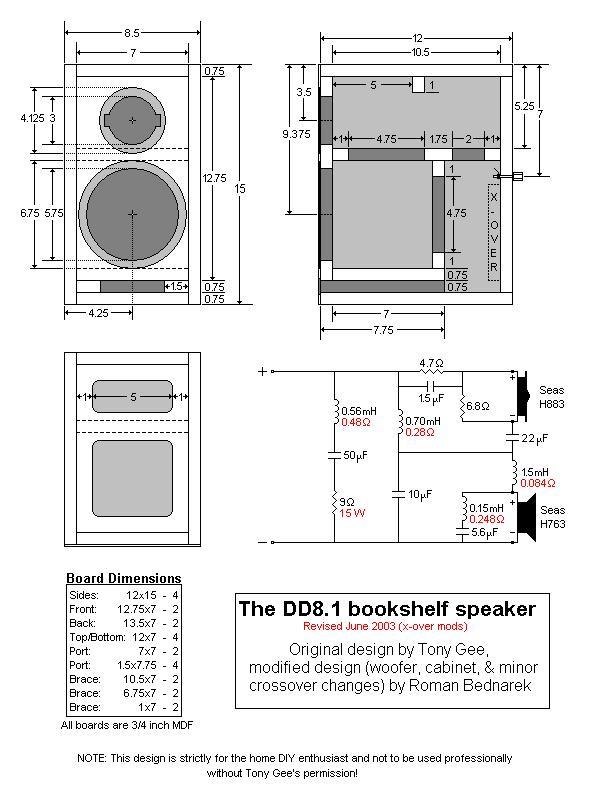
PerformanceBelow is a plot of the measured farfield frequency response for the DD8.1 design. This is an ungated measurement that includes all room interactions and reflections. Room reflections show up below 500Hz, above that the measurement is relatively free of them. Overall the DD8.1s measure pretty flat, almost within +/- 1 dB in the higher frequency range. When compared with Tony Gee's original DD8, simulations indicate that the DD8.1 has a slightly deeper bass extension and less rolloff at the top end.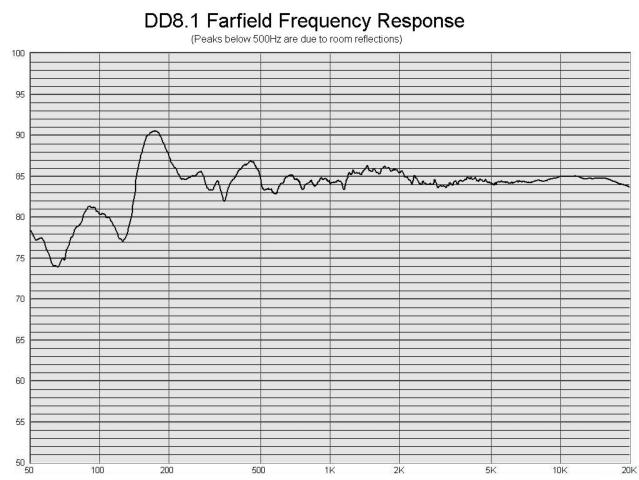
The DD8.1s have a very revealing midrange to them and sound a bit on the bright side overall. They play surprisingly deep for such a small speaker. The imaging is decent and the soundstage is somewhat shallow most likely due to the forward sounding midrange. When fed a good, clean recording they really excel and sound very nice. They reveal every little detail present in the recording which is why they sound so nice with well recorded material. However, they are so detailed that they will reveal every fault in a bad recording which makes them very sensitive to source material. This may be coincidence, but they sound particularly nice with metallic instruments such as horns and cymbals. The tweeter sounds very clean but does lack a bit of air and transparency common to some of the better fabric dome tweeters. In general I would say these speakers sound best with jazz and classical. They are a little too detailed for most rock music especially with distorted guitars and can sound a bit harsh at times. 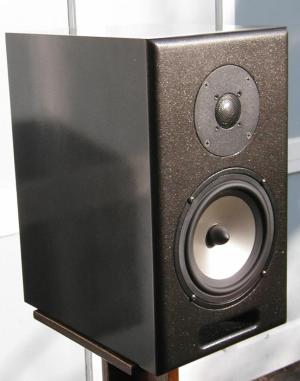
|
